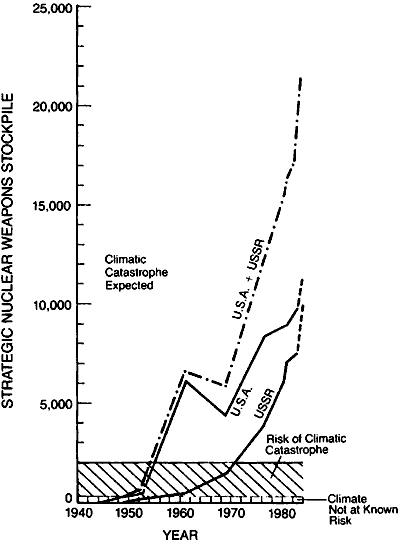Saturday, March 31, 2012
The Aesthetics of the Scientific Depiction of State-Inflicted Megadeath I
The Aesthetics of the Scientific Depiction of State-Inflicted Megadeath I.
[See Part II of this essay].
It has been 41 years since the Mariner 9 spacecraft went into orbit around Mars (September 1971). One of the planetary scientists who was active in this and other programs to explore the planets was Carl Sagan (1934-1996). In an example of scientific serendipity the scientists noticed that Mars was engulfed in a huge dust storm which threatened to limit the ability of the orbiting spacecraft to photograph the surface of Mars. A consequence of the dust cloud which enveloped the planet was that the surface temperatures on Mars dropped dramatically because the high level dust particles in the atmosphere blocked sunlight from reaching the surface. It led to Sagan wondering whether something similar would happen on earth if a nuclear war broke out between the superpowers causing massive fire storms in the cities (as had happened in Dresden and other German cities bombed by the Allies in WW2) which would pump huge amounts of soot and ash into the upper atmosphere.

Some 12 years later Sagan and a small group of atmospheric physicists came to the conclusion that something similar might happen on earth if even a "moderately" sized nuclear exchange took place on earth (a hundred or so thermonuclear weapons). They termed the climatic consequences on a nuclear war-created dust cloud which circled the earth and dramatically lowered surface temperatures and thus shortened the growing season for crops, as a "nuclear winter". Sagan co-authored a paper in Science in December 1983 which first brought this possibility to world attention (the so-called "TTAPS" paper authored by Turco, Toon, Ackerman, Pollack, and Sagan).
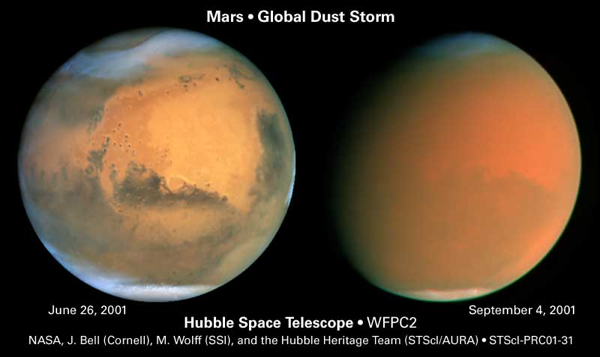
The implication of their work was that the use of nuclear weapons, even if as an act of "self-defense" or retaliation, would be suicidal for any party which used them - aggressor or victim alike. The drastic shortening of the crop growing season cause by the nuclear winter effect on climate would cause the deaths of tens of millions, perhaps hundreds of millions of lives. People would either freeze or starve to death in the years it would take for the dust and soot to be washed out of the atmosphere.
The nuclear winter hypothesis was not welcomed by the states which possessed nuclear weapons because it undermined the very reason for having them, let alone using them for "defensive" purposes. The vested interests who benefited from researching, building, and deploying nuclear weapons were /are so powerful that it is hard to imagine them ever voluntarily agreeing to give them up. When the cold war ended with the collapse of the Soviet Union and when significant cuts were made to the nuclear arsenals of the superpowers, the nuclear winter hypothesis was conveniently forgotten.
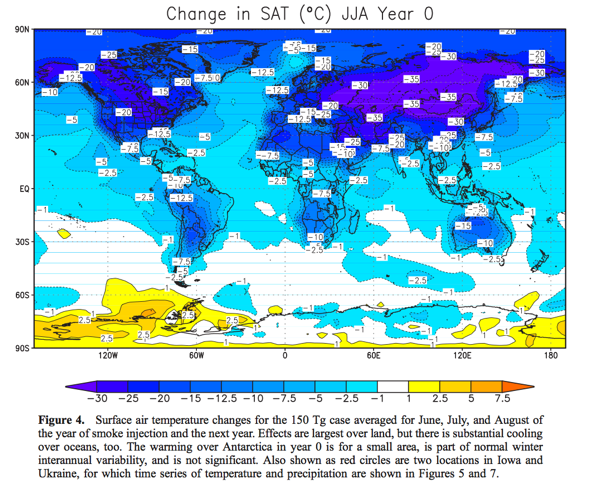
In 2007 the hypothesis was revisited using the latest climate modeling and the results are not encouraging. [See the paper by A. Robock, L. Oman and G. Stenchikov, “Nuclear Winter Revisited with a Modern Climate Model and Current Nuclear Arsenals: Still Catastrophic Consequences” (2007)]. The latest models (developed to model climate change and global warming) show that the effects of the nuclear winter would last longer than people had realized using the earlier modeling. What struck me when reading this paper was not so much the horror of what a nuclear exchange would cause in the destruction of life and property of innocent non-combatants world-wide (that has been obvious for decades), but that it could be and has to be described in the cold and calculating language of science. The mathematics is heartless and it is quite proper for scientists to use it. They also graphically show the results of their findings in charts and graphs to make them more understandable. It stuck me that these graphs and charts and pictures were eerily artistic and aesthetic in their own cruel way. And that is what I want to highlight below by showing some of the most "artistic" images from the Robock, Oman and Stenchikov paper.
Bibliography.
Most recent articles:
For Nuclear Security Beyond Seoul, Eradicate Land-Based 'Doomsday' Missiles by David Krieger and Daniel Ellsberg, March 27, 2012. At the Nuclear Age Peace Foundation <http://www.wagingpeace.org/articles/db_article.php?article_id=351>
Classic papers on the nuclear winter hypothesis
1982 AMBIO: Crutzen P., Birks J. (1982). "The atmosphere after a nuclear war: Twilight at noon". Ambio 11 (2): 114–25. JSTOR 4312777
TTAPS: R. P. Turco, O. B. Toon, T. P. Ackerman, J. B. Pollack, and Carl Sagan (23 December 1983). "Nuclear Winter: Global Consequences of Multiple Nuclear Explosions". Science 222 (4630): 1283–92. doi:10.1126/science.222.4630.1283
P. J. Crutzen, J. W. Birks, Ambio 11, 114 (1982); R. P. Turco et al., Science 222, 1283 (1983); V. V. Aleksandrov, G. L. Stenchikov, On the Modeling of the Climatic Consequences of the Nuclear War: Proceedings on Applied Mathematics, Computing Center, USSR Academy of Sciences, Moscow (1983).
C. Sagan, Foreign Affairs, 62, 257 (1983/84).
The Cold and the Dark: The World after Nuclear War: Conference on the Long-Term Worldwide Biological Consequences of Nuclear War (Washington, D.C.) 31 October 1983.
Recent updates of the "nuclear winter" hypothesis using the latest climate modeling:
A. Robock, L. Oman and G. Stenchikov, “Nuclear Winter Revisited with a Modern Climate Model and Current Nuclear Arsenals: Still Catastrophic Consequences,” Journal of Geophysical Research – Atmospheres, Vol. 112, No. D13, 2007. Retrieved from http://climate.envsci.rutgers.edu/pdf/RobockNW2006JD008235.pdf
S. Starr, “Catastrophic Climatic Consequences of Nuclear Conflict,” International Commission on Nuclear Non-Proliferation and Disarmament, December 2009. Retrieved from http://icnnd.org/Documents/Starr_Nuclear_Winter_Oct_09.pdf
<http://en.wikipedia.org/wiki/Nuclear_Winter>
The Aesthetics of the Scientific Depiction of State-Inflicted Megadeath II.
The Aesthetics of the Scientific Depiction of State-Inflicted Megadeath II.
[See Part I of this essay]
The following consists of extracts from Robock, Oman, and Stenchikov (2007) with a selection of the graphs and tables they used to illustrate their scientific paper on the effects of a "nuclear winter" which is predicted to occur after a nuclear exchange. These quite attractive and eye-catching illustrations depict the horrific consequences of the aftermath of a nuclear war in which hundreds of millions of people die, in addition to the millions who would die in the immediate explosions.
[Alan Robock, Luke Oman, and Georgiy L. Stenchikov, "Nuclear winter revisited with a modern climate model and current nuclear arsenals: Still catastrophic consequences" Journal of Geophysical Research – Atmospheres, Vol. 112, No. D13, 2007. <http://climate.envsci.rutgers.edu/pdf/RobockNW2006JD008235.pdf>].
Summary
[1] Twenty years ago, the results of climate model simulations of the response to smoke and dust from a massive nuclear exchange between the superpowers could be summarized as ‘‘nuclear winter,’’ with rapid temperature, precipitation, and insolation drops at the surface that would threaten global agriculture for at least a year. The global nuclear arsenal has fallen by a factor of three since then, but there has been an expansion of the number of nuclear weapons states, with additional states trying to develop nuclear arsenals. We use a modern climate model to reexamine the climate response to a range of nuclear wars, producing 50 and 150 Tg of smoke, using moderate and large portions of the current global arsenal, and find that there would be significant climatic responses to all the scenarios. This is the first time that an atmosphere-ocean general circulation model has been used for such a simulation and the first time that 10-year simulations have been conducted. The response to the 150 Tg scenario can still be characterized as ‘‘nuclear winter,’’ but both produce global catastrophic consequences. The changes are more long-lasting than previously thought, however, because the new model, National Aeronautics and Space Administration Goddard Institute for Space Studies ModelE, is able to represent the atmosphere up to 80 km, and simulates plume rise to the middle and upper stratosphere, producing a long aerosol lifetime. The indirect effects of nuclear weapons would have devastating consequences for the planet, and continued nuclear arsenal reductions will be needed before the threat of nuclear winter is removed from the Earth.
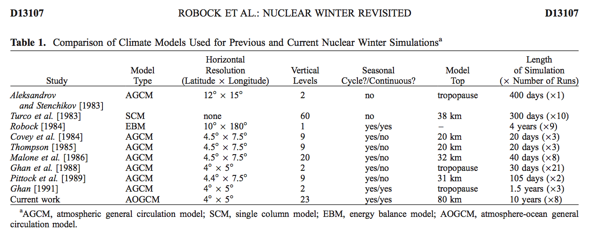
1. Introduction
[2] As first suggested by Crutzen and Birks [1982], climate model simulations by Turco et al. [1983] and Aleksandrov and Stenchikov [1983] showed that a full-scale nuclear war would produce surface temperature, precipita- tion, and insolation reductions so large that the climatic consequences were described as ‘‘nuclear winter.’’ Soon after the world was confronted with the prospect of potential indirect effects of nuclear war much larger than the direct effects, and starvation of billions of people from the collapse of world agriculture, the arms race and cold war ended. Since then, the global nuclear arsenal has been reduced by a factor of three…
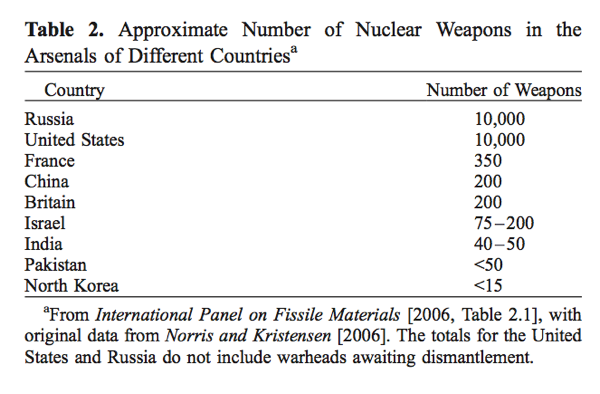
[3] Prompted by the recent work of Toon et al. [2007] and Robock et al. [2007], who showed that a regional nuclear conflict using 100 Hiroshima-size (15 kt) nuclear weapons, only 0.03% of the explosive power of the current global arsenal, would produce climate change unprecedented in human history, we revisit the nuclear winter issue with a modern climate model. We ask the question of whether the current nuclear arsenal could still produce a nuclear winter.
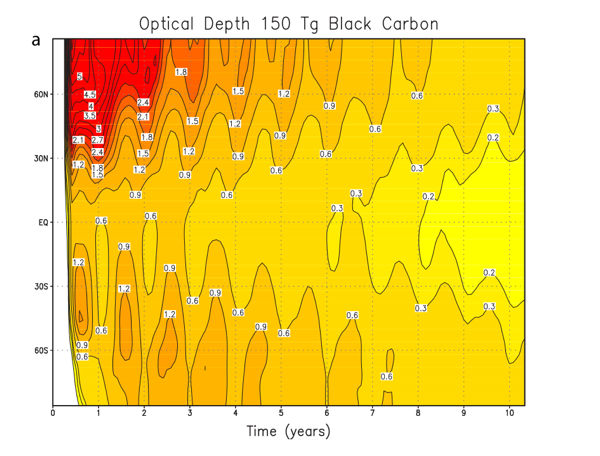
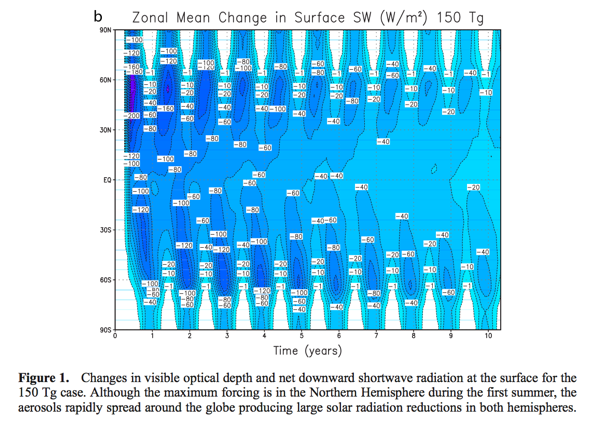
[4] All previous simulations of the climatic response to the smoke generated from a nuclear war were limited by computer power and the available climate models. As shown in Table 1, each simulation addressed certain aspects of the climate model response with simple climate models or with short simulations of low-resolution atmospheric general circulation models (GCMs), but now for the first time we use a coupled atmosphere-ocean GCM run contin- uously for multiple 10-year simulations and with a model top at the mesopause.
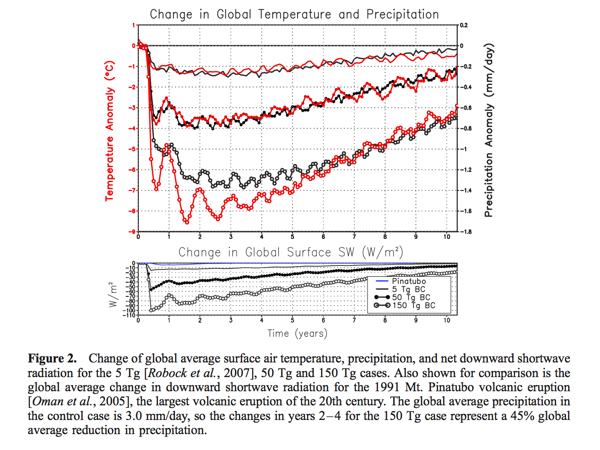
4. Results for the 150 Tg Case
[19] As found by Robock et al. [2007] for a 5 Tg case, the black carbon particles in the aerosol layer for the 150 Tg case are heated by absorption of shortwave radiation and lofted into the upper stratosphere. The aerosols quickly spread globally and produce a long-lasting climate forcing (Figure 1). They end up much higher than is typical of weakly absorbing volcanic sulfate aerosols, which typically are just above the tropopause [Stenchikov et al., 1998]. As a result, the soot aerosols have a very long residence time and continue to affect surface climate for more than a decade. The mass e-folding time for the smoke is 4.6 years, as compared to 1 year for typical volcanic eruptions [Oman et al., 2006a] and 1 week for tropospheric aerosols. After 4.6 years, the e-folding time is reduced, but is still longer than that of volcanic aerosols. In addition to the lofting of the smoke by solar absorption, another reason for this difference is that volcanic sulfate aerosols are larger, with an effective radius of 0.5 mm, and thus they have a higher settling velocity than the smaller smoke aerosols. This long smoke aerosol lifetime is different from results found in previous nuclear winter simulations, which either fixed the vertical extent of the aerosols [Turco et al., 1983] or used older-generation climate models with limited vertical reso- lution and low model tops [Aleksandrov and Stenchikov, 1983; Covey et al., 1984; Malone et al., 1986], artificially limiting the particle lifetimes.
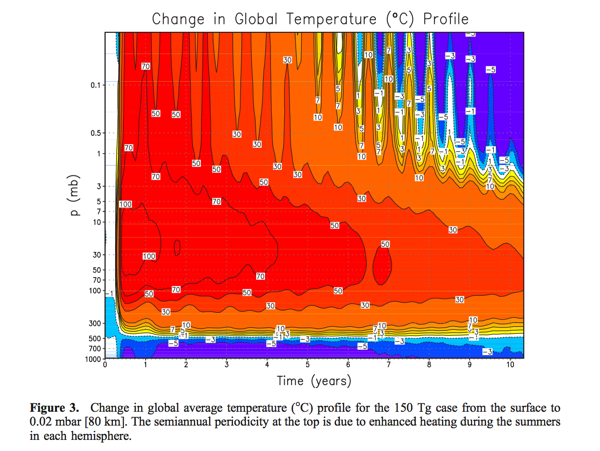
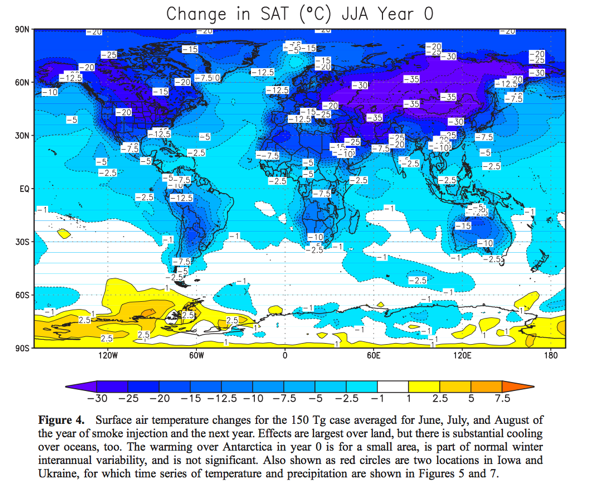
[20] The maximum change in net global average surface shortwave radiation for the 150 Tg case is 100 W m2 (Figure 2). This negative forcing persists for many years, with the global average value still at 20 W m2 even 10 years after the initial smoke injection. This forcing greatly exceeds the maximum global average surface forcing of 4 W m2 for the 1991 Mt. Pinatubo volcanic eruption [Kirchner et al., 1999; Oman et al., 2005], the largest of the 20th century, also shown in Figure 2. The volcanic forcing disappeared with an e-folding time of only 1 year, and during the first year averaged 3.5 W m2 (Figure 2).
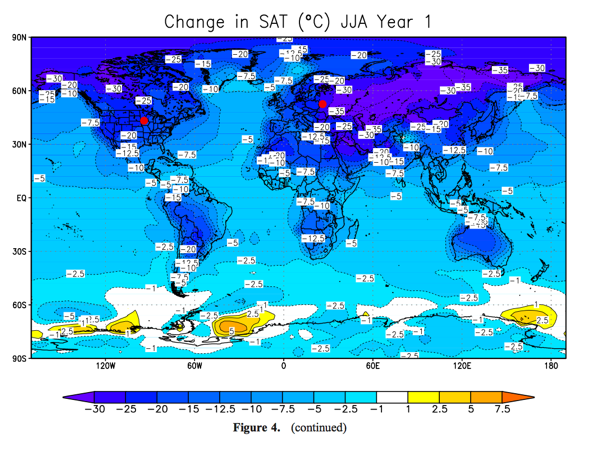
[21] The effects of the smoke cloud on surface tempera- ture are extremely large (Figure 2). Stratospheric temper- atures are also severely perturbed (Figure 3). A global average surface cooling of 7°C to 8°C persists for years, and after a decade the cooling is still 4°C (Figure 2). Considering that the global average cooling at the depth of the last ice age 18,000 years ago was about 5°C, this would be a climate change unprecedented in speed and amplitude in the history of the human race. The temperature changes are largest over land. Maps of the temperature changes for the Northern Hemisphere summers for the year of smoke injection (year 0) and the next year (year 1) are shown in Figure 4. Cooling of more than 20°C occurs over large areas of North America and of more than 30°C over much of Eurasia, including all agricultural regions. There are also large temperature changes in the tropics and over Southern Hemisphere continents. Large climatic effects would occur in regions far removed from the target areas or the countries involved in the conflict.
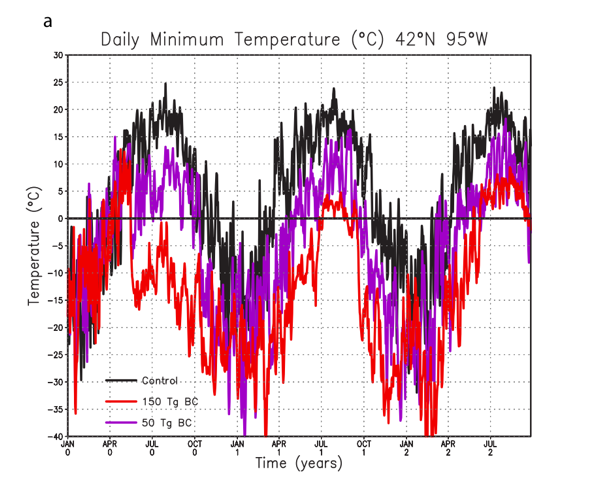
[22] As examples of the actual temperature changes in important grain-growing regions, we have plotted the time series of daily minimum air temperature for grid points in Iowa, United States, at 42°N, 95°W, and in Ukraine at 50°N, 30°E (Figure 5). For both locations (shown in Figure 4), minimum temperatures rapidly plummet below freezing and stay there for more than a year. In Ukraine, they stay below freezing for more than two years. Clearly, this would have agricultural implications.
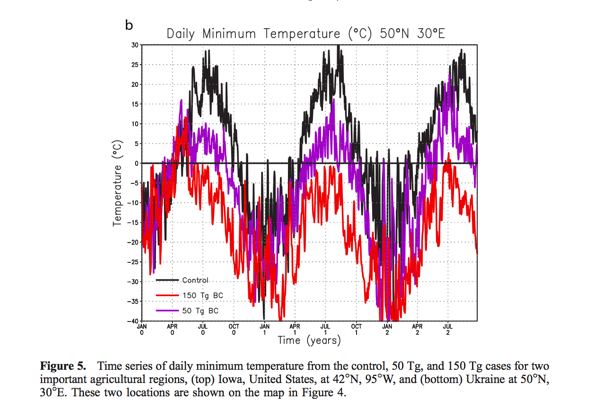
[23] As a result of the cooling of the Earth’s surface, evapotranspiration is reduced and the global hydrological cycle is weakened. In addition, Northern Hemisphere sum- mer monsoon circulations collapse, because the driving continent-ocean temperature gradient does not develop. The resulting global precipitation is reduced by about 45% (Figure 2). As an example, Figure 6 shows a map of precipitation change for the Northern Hemisphere summer one year after the smoke injection. The largest precipitation reductions are in the Intertropical Convergence Zone and in areas affected by the North American, Asian, and African summer monsoons. The small areas of increased precipitation are in the subtropics in response to a severely weakened Hadley Cell. Figure 7 shows time series of monthly pre- cipitation for the same Iowa location as shown in Figure 5, and it is clear that these large precipitation reductions would also have agricultural implications.
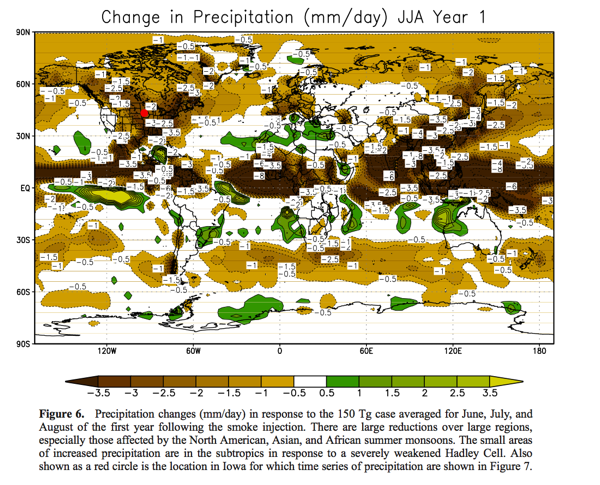
[24] This is the first time an atmosphere-ocean general circulation model of the climate system has been used to study nuclear winter. It is the first one to be able to estimate the amplitude and timescale of ocean cooling, and to evaluate the time the system will need to return to the previous equilibrium. This is because the model explicitly models the effects of the thermal inertia of the ocean at different depths, as well as oceanic circulation changes. The long-lasting climate response to this smoke injection is a combination of the ability of the model to loft the soot aerosols high into the stratosphere, and of the ability of the model to calculate the characteristic response time of the climate system.
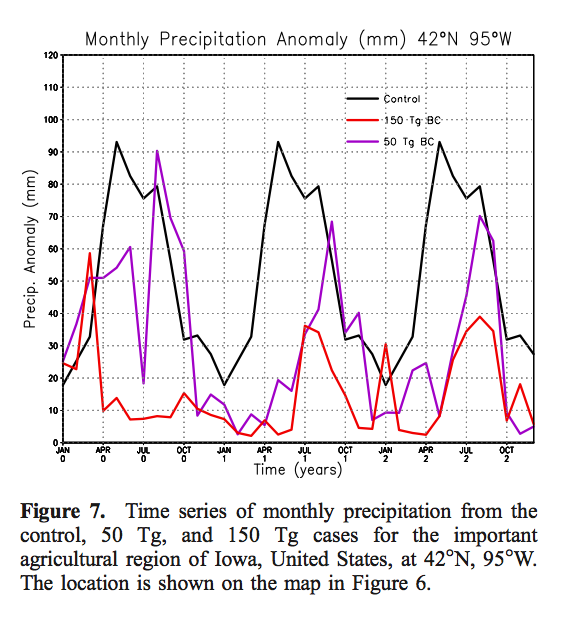
6. Impacts
[28] The amplitude of the climate changes from the 5 Tg, 50 Tg and 150 Tg cases are compared to those from global warming of the past century in Figure 8 and climate change of the past 1000 years in Figure 9. In both cases it is clear that all cases would produce unprecedented long-lasting climate change. The 50 Tg and 150 Tg cases produce cooling as large or larger than that experienced 18,000 years ago during the coldest period of the last Ice Age.
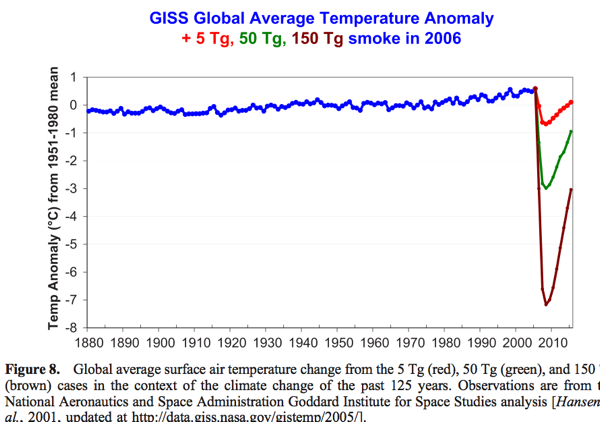
[29] Harwell and Hutchinson [1986] clearly described the impacts of nuclear winter. They assumed that there would be no food production around the world for one year and concluded that most of the people on the planet would run out of food and starve to death by then. Our results show that this period of no food production needs to be extended by many years, making the impacts of nuclear winter even worse than previously thought.
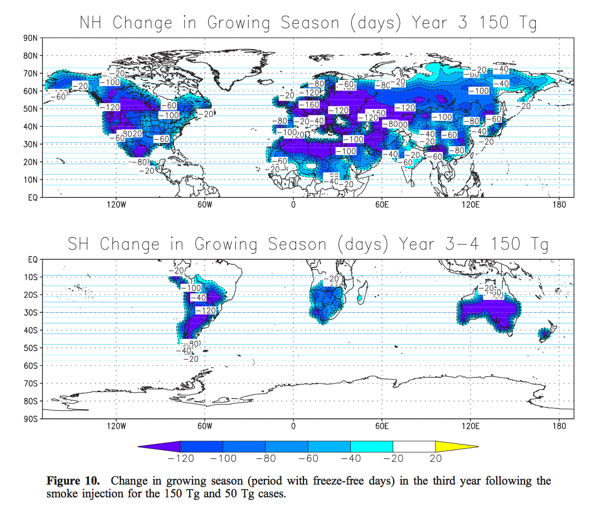
[30] Agriculture would be affected by many factors, including temperature changes, precipitation changes, and changes in insolation [e.g., Robock et al., 1993; Mayt ́ın et al., 1995]. As an example, Figure 10 shows changes in the length of the freeze-free growing season for the third full growing seasons in the Northern and Southern Hemi- spheres. Such large reductions in growing season would completely eliminate crops that have insufficient time to reach maturity. Also, global ozone loss is likely [Toon et al., 2007], with effects on downward ultraviolet radiation [Vogelmann et al., 1992] and atmospheric circulation. Further analysis of these and other effects, which is beyond the scope of this paper, is needed.
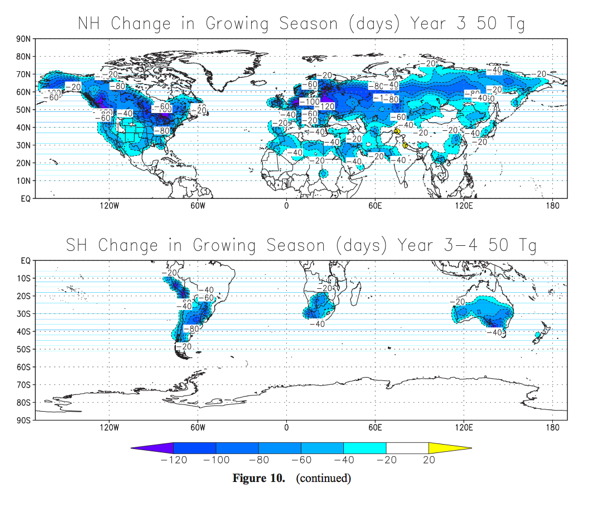
Sunday, March 25, 2012
Molinari on the Suction Pump of "Ulcerous Government"
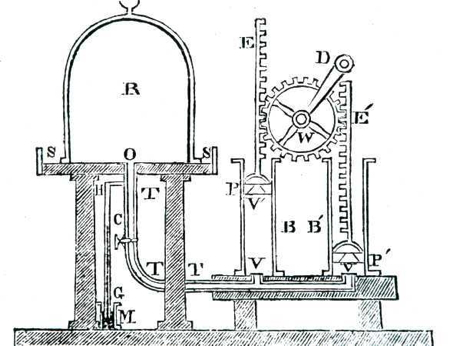
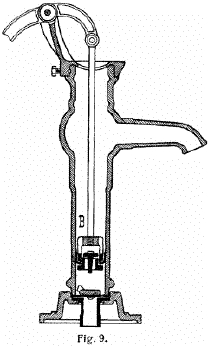
The State as "the suction pump" which sucks out taxes and debts from the Body Politic, thus causing ulcers to form.
[This is how it works: the State turns handle D which turns wheel W, which alternately raises and lowers suction valves E and E', which draws the citizens' taxes up through pipe G, thus filling vessel R, which can be used by the Ruling Class for whatever they want.]
I have translated the concluding pages of Molinari’s 2 volume treatise on political economy which he published in 1855 and revised in a second edition in 1863 while he was teaching and working in Belgium. He continued to develop and expand the ideas he first presented on this topic on “the production of security” and the “liberty of government” in the mid and late 1840s. As he says in a footnote, he is willing to claim priority in formulating these “fanciful” ideas.
The passage which caught my eye is this one:
Thus, by the very fact of their anti-economic constitution, governments have become the ulcers of societies (“les ulcères des sociétés”), to use the strong expression coined by J.B. Say. As population and wealth increase, thanks to the progressive development [531] of competitive industries, a growing mass of vital energy is sucked out of society by the suction pump which are taxes and debts, in order to subsidise the costs of production of public services, or to put it in a better way, to subsidise the support and easy enrichment of the particular class which controls the monopoly of the production of these services.
See the full translation of these pages here <http://davidmhart.com/FrenchClassicalLiberals/Molinari/Articles/UlcerousGovernment.html>.
Following Molinari's reference to Say I tried to find the source of Molinari's idea that the state is an ulcer on the body politic of society (or rather, body economic) but the passage from Say he cites has no reference to ulcers or any any disease. So it appears Molinari might the originator of this expression, although I recall that a similar use of the expression can be found in an article in the Dictionnaire de l'économie politique (1852) (I need to track this down!).
Source: Molinari, Cours d'économie politique, deuxième édition revue et augmentée, Tome II. La circulation et la consommation des richesses, (Paris: Guillaumin, 1863), pp. 528-34. Douzième leçon. "Les consommations publiques" (Pubic Consumption).
The quote continues:
As progress has given rise to the vital forces of society, what is the cure for this ulcer which devours them?
If, as I have tried to demonstrate, the problem comes from the anti-economic constitution of governments, the cure obviously consists in making this constitution conform to the essential principles which it does not understand, namely to make it economic. To achieve this it is necessary in the first instance to rid the governments of all those functions which have been annexed to their natural function of being producers of security, by making them return education, religion, the coining of money, transportation, etc., to the private sector, to the law of competition.
Already, the cause of the simplification of the functions of government has been won in theory [532] even if it has not been won in practice. On the other hand, the idea of subjecting governments to the regime of competition is still generally regarded as being fanciful. On this point perhaps the facts are advancing ahead of the theory. The “right of secession” has paved the way in the world and will have the necessary consequence of establishing the liberty of government. The day will come when this right will be recognised and applied throughout its natural range and political competition will serve as a complement to competition in agriculture, industry and commerce.
Whereas Molinari sees the state a a big suction pump draining wealth out of society, his contemporary Honoré Daumier views the state as a "tax eater" which consumed wealth by eating the taxes the citizens were forced to pay. Here is Daumier's “Gargantua” (1831) which is a thinly disguised depiction of King Louis Philippe:
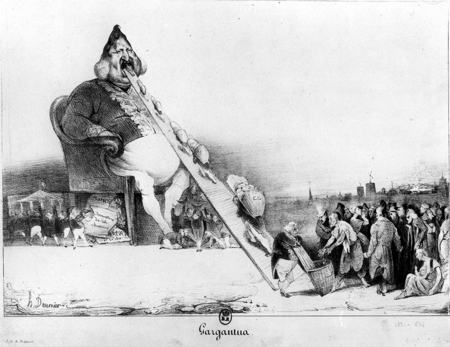
See a larger version of this image [1400 px] and the illustrated essay I have written on this.
Friday, March 23, 2012
Molinari waxing Lyrical about Liberty in 1849
The 100th Anniversary of the death of the French/Belgian classical liberal economist Gustave de Molinari (3 March 1819 - 28 January 1912) - the Founding Father of the Anarcho-capitalist Tradition.
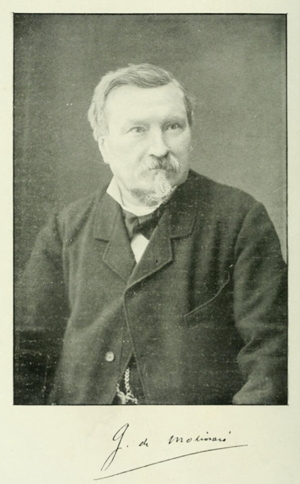
I am working on the translation of Gustave de Molinari's 1849 book Les Soirées de la rue Saint-Lazare; entretiens sur les lois économiques et défense de la propriété. (Paris: Guillaumin, 1849). I came across this passionate speech about liberty in the final "conversation" the Economist (aka Molinari) had with the Socialist and the Conservative. I especially like the reference to Spartacus. For more from the Soirées see here.
It is in a free milieu, in a milieu in which the property rights of each person with respect to his faculties and the results of [p. 358] his labor are fully respected, that production develops to the maximum, and that the distribution of wealth is proportioned irresistibly to the efforts and sacrifices each person has put in.
Now from the beginning of the world, the strongest and most cunning men have infringed the internal or external property of other men, in order to consume some of their share in the fruits of production. From this arose slavery, monopolies and privileges.
At the same time as they destroyed the equitable distribution of wealth, such slavery, monopolies and privileges slowed down production, either by reducing the incentive producers had to make things, or in deflecting them away from the kind of production they could most usefully pursue. Oppression engendered poverty.
For long centuries, humanity groaned in the limbo of servitude. From one age to another, however, the somber clamor of distress and anger echoed in the midst of the enslaved and exploited masses. The slaves rose up against their masters, demanding freedom.
Freedom! That was the cry of the captives of Egypt, the slaves of Spartacus, the peasants of the Middle Ages, and more recently of the bourgeoisie oppressed by the nobility and religious corporations, of the workers oppressed by masters and guilds. Freedom, that was the cry of all those who found their property confiscated by monopoly and privilege. Freedom, that was the burning aspiration of all those whose natural rights had been forcibly repressed.
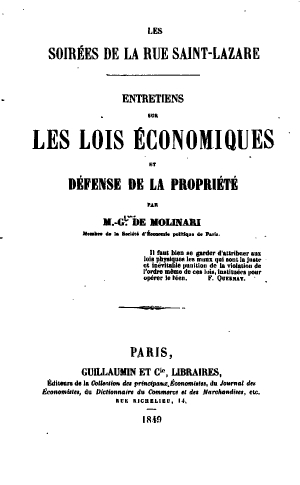
Molinari and the Discussions on Saint Lazarus Street 1849
Gustave de Molinari (1819-1912) was the founding father of the anarcho-capitalist tradition and Les Soirées was one of the first one volume surveys of the entire classical liberal or libertarian worldview. It is also interesting as it was written in the immediate aftermath of the 1848 Revolution in Paris when socialist politicians came to power and tried to implement the first modern welfare state.

I have put online a new, corrected edition of his book in French online <http://davidmhart.com/FrenchClassicalLiberals/Molinari/EveningsStLazare/Soiree-French.html>.
The quotation on the title page is from Quesnay, a free market theorist from the Physiocrat school. Here is the English translation:
"It is necessary to refrain from attributing to the physical laws the evils which are the just and inevitable punishment for the violation of this very order of laws, which have been instituted in order to produce good."
Here is the table of contents in English (from the translation I am working on). The 11th Evening is the first appearance of an argument for the anarcho-capitalist position. I am posting bits of the translation as they become available <http://davidmhart.com/FrenchClassicalLiberals/Molinari/EveningsStLazare/ToC.html>:
Molinari's Preface
The First Evening - SUMMARY : Attitudes to the problem of society. – That society is governed by natural, immutable and absolute laws. – That property is the basis of the natural organization of society. – Property defined. – Enumeration of the attacks mounted today on the principle of property.
The Second Evening - SUMMARY: Attacks made on external property. – Literary and artistic property laws. – Counterfeiting – ownership of inventions.
The Third Evening - SUMMARY – Continuation on the attacks made on external property. – The law of Compulsory Purchase for reasons of Public Utility. – Legislation relating to mines. – The Public Domain, State property, departments and villages. – Forests. – Roads. – Canals. – Waterways. – Mineral waters.
The Fourth Evening - SUMMARY: The right to make a will. –Legislation regulating inheritance. – The right of inheritance. – Its moral outcomes. – Its material outcomes. – Comparison of French and British agriculture. – On Entails and their utility. The natural organization of farming under a regime of free property.
The Fifth Evening - SUMMARY: The right to lend. –Legislation regulating lending at interest. – Definition of capital. – Motives driving capital formation. – On credit. – On interest. – On its constituent elements. – Labor. – Hardship. – Risks. – How these conditions can be alleviated. – That the laws cannot achieve this. – The disastrous results of legislation restricting the rate of interest.
The Sixth Evening - SUMMARY: The right of exchange. – on the exchange of labor. –Laws on Unions. – Articles 414 and 415 of the Penal Code – The Union of Paris Carpenters, 1845. – Proof of the law which makes the price of things gravitate towards their production costs. – Its application to labor. – That the worker can sometimes dictate to the employer. – An example from the British West Indies. – The Natural organization of the sale of labor.
The Seventh Evening - SUMMARY: Right to trade, continuation. – International trade – Protectionism. – Its purpose. – M. de Bourrienne’s Aphorisms. – Origin of Protectionism. – Mercantilism. –Arguments for protection. – Currency depletion. – Independence from other countries. – Increase in domestic production. – That Protectionism has reduced overall output. – That it has made production precarious and distribution unfair.
The Eighth Evening - SUMMARY: Attacks made on internal property. – Industries monopolised or subsidised by the State. – Production of money. – The nature and uses of money. – Why a country could not use up all its currency. – Communication routes. – Managed expensively and badly by the state. – Carrying letters. – Postmasters. – That government intervention in production is always harmful. – Subsidies and Privileges for theatres. – Public libraries. – Subsidies to religion. – Monopoly of teaching. – Its dire results.
The Ninth Evening - SUMMARY: Continuation of attacks made on internal property. – Right of association. – Legislation which in France regulates commercial companies. – The public limited company and its advantages. – On banking monopolies. – Functions of banks. – Results of government intervention in the affairs of banks. – High cost of discounts. – Legal bankruptcies. – Other privileged or regulated industries. – The bakery trade. – The meat trade. – Printing. – Lawyers. – Stock and investment brokers. – Prostitution. – Funeral directors. – Cemeteries. – The Bar. – Medicine. – The Professoriat. – Article 3 of the law of July 7-9, 1833.
The Tenth Evening - SUMMARY: On state charity and its influence on population. – The law of Malthus. – Defence of Malthus. – On the population of Ireland. – How to put an end to Ireland’s woes. – Why state welfare creates an artificial growth in population. – On its moral influence on the working class. – That state charity discourages private charity. – On the quality of the population. – Ways of improving the population. – The mixing of races. – Marriage. – Successful marriages. – Ill-matched marriages. – Their influence on race. – In what situation, under what regime would the population most easily maintain itself at the level of its means of existence.
The Eleventh Evening - SUMMARY: On government and its function – Monopoly governments and communist governments. – On the liberty of government. – On divine right. – That divine right is identical to the right to work. – The vices of monopoly government. – War is the inevitable consequence of such arrangements. – On the sovereignty of the people. – How we lose our sovereignty. – How we can retrieve it. – The liberal solution. – The Communist solution. – Communist governments. – Their vices. – Centralization and decentralization. – On the administration of justice. – On its former organisation. – On its current organisation. – On the inadequacy of the jury system. – How the administration of security and of justice could be made free. – The advantages of free governments. – How nationality should be understood.
The Twelfth and Last Evening - SUMMARY: Rent. – Its Nature and its Origin. – Resumé and Conclusion.
Wednesday, March 21, 2012
Images of the Smuggler Louis Mandrin (1725-1755) - the 18thC French Robin Hood
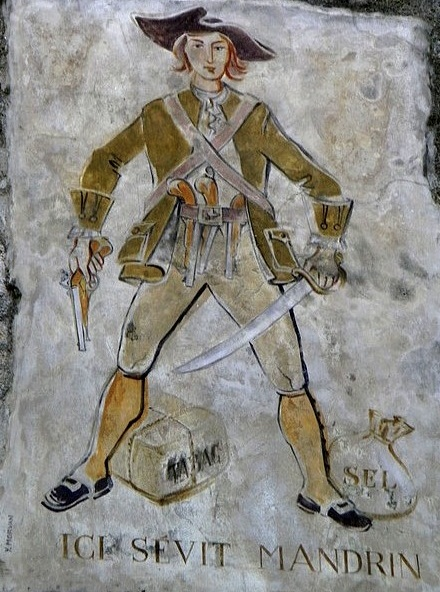
Louis Mandrin (1725-55) was a famous 18th century brigand and highwayman who challenged the privileges of the Farm General (la Ferme générale - or "Tax Farmers") by smuggling goods across the French border which were the monopoly of the Farm General.
The Farm General was reorganized in 1726 to include a group of 40 (later 90) politically well connected individuals (the Farmers General - "les Fermiers généraux) who were given exclusive contracts by the king (via the Minister of Finance who received his cut in the form of bribes, or "pots-de-vin") to sell and thereby collect taxes on such items as salt, tobacco products, wine, and to enforce compulsory work on public goods such as roads (the octrois). This was an early version of "contracting out" or "privatizing" the collection of customs and taxes and was much hated by ordinary people in the 18th century. When the Farmers General were abolished in 1971 28 of the members were arrested and executed, including the mathematician Antoine Lavoisier.
Mandrin was under contract with the Farm General to supply mules to the French army but when most of the died in transit the Farm General refused to pay him. After several run ins with the law resulting in Mandrin being condemned to death in 1753 and after his younger brother was executed for counterfeiting, Mandrin "declared war" on the Farmers General and began smuggling untaxed goods across the Swiss border and selling them in France. He became a popular hero for resisting the tax collecting Farmers General, which he did for the following 2 years before he was finally arrested and executed.
Mandrin became a folk hero about whom popular songs were written and in the 20th century even films and a TV show were made about his exploits. A local Grenoble dark beer was also named after him in 2002.

Here are some images of him from the Bibliothèque nationale and some further reading:
Begin with the Wikipedia article (in English) <http://en.wikipedia.org/wiki/Louis_Mandrin> and then the French one <http://fr.wikipedia.org/wiki/Louis_Mandrin>.
There is a Mandrin website (in French) with lots of resources <http://www.mandrin.org/>.
A film of the exploits of his followers after his execution will be appearing in early 2012 - Les Chants de Mandrin (2011), "The Ballads of Mandrin". The webiste with a trailer is here <http://www.mandrin.org/les-chants-de-mandrin.html>.
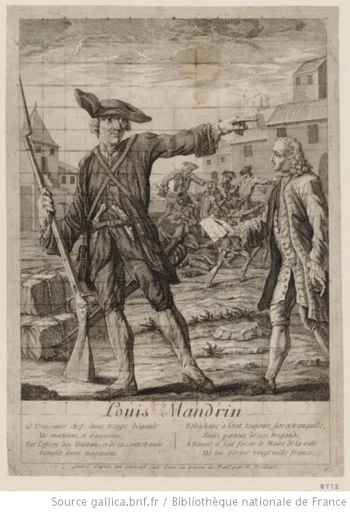
This is my favorite depiction of Mandrin. He is telling the Tax Farmer (who is showing him his official papers from the King) where to go. The goods he is "liberating" from the tax farmer so he call sell them tax free to the people are scattered on the ground.
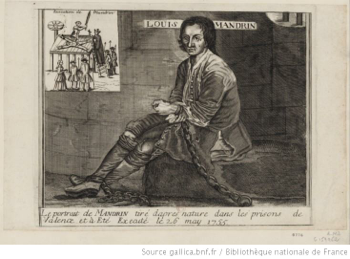
This is the saddest one with Mandrin chained in prison waiting to be beaten of the rack and slowly killed by the French Army.
Here are a selection of other depictions of him:
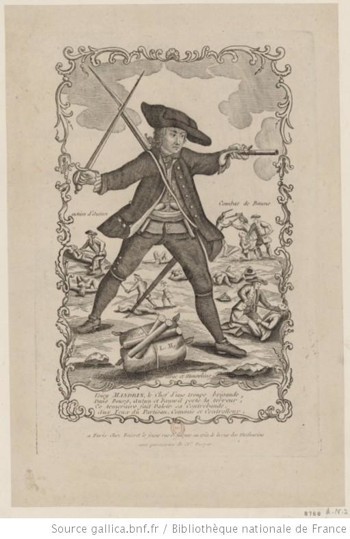
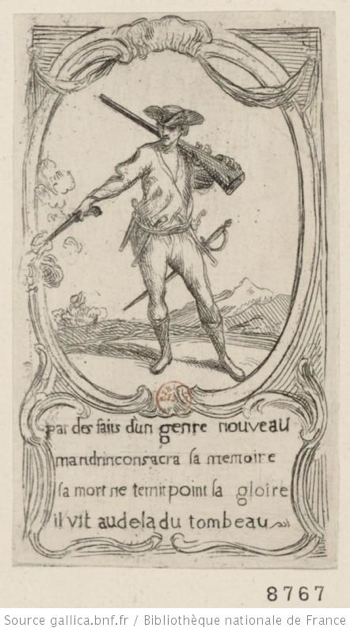

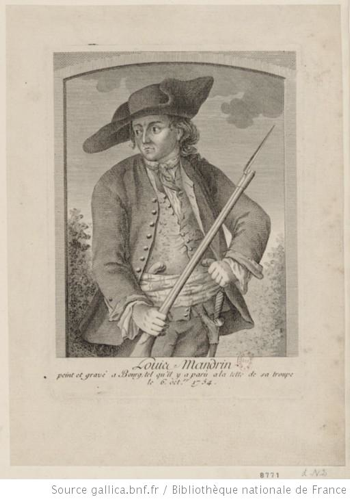
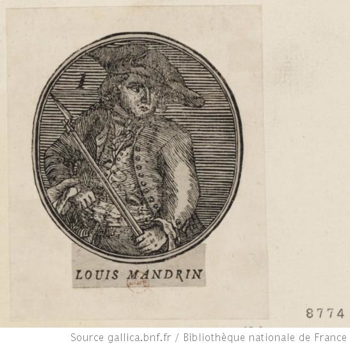
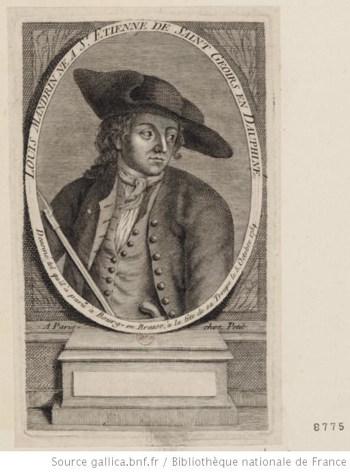
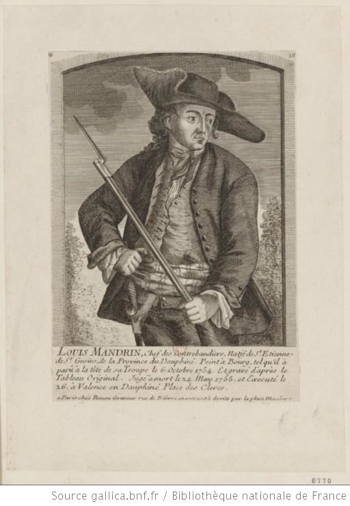
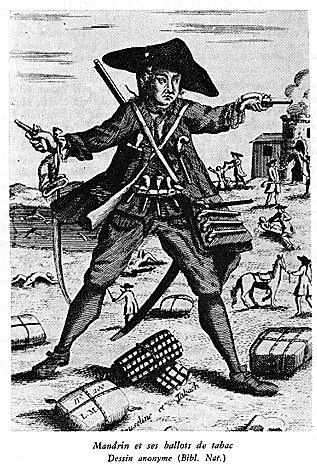
Sunday, March 18, 2012
Protectionist Hypocrisy
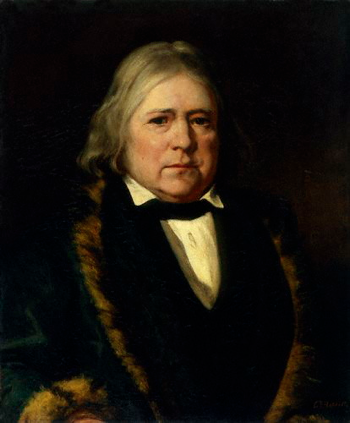
Today I came across this great speech by William Johnson Fox (1786-1864) who was one of the leading figures in the Anti-Corn Law League. He gave it at the Covent Garden Theatre on January 25, 1844, and it is a devastating attack on the hypocrisy of those members of the elite who want to prevent the masses from enjoying the same benefits of international trade as they do. I especially like the spreading of guano bit at the beginning.
The Monkey Economists and Free Trade
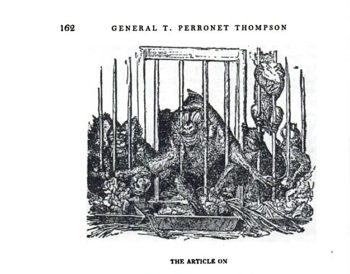
[See a larger version 740x578 px 459 KB]
Molinari saw a French translation of a British pamphlet of an article which was first published in the Westminster Review in January 1830. "The Article on Free Trade”was written by Col. Thomas Perronet Thompson who was very active in the free trade movement and whose work on the Corn Law Fallacies influenced Frédéric Bastiat. The essay was accompanied by a cartoon drawn by Thomas Landseer (1795-1880) who had made a name for himself by publishing a series of caricatures of humans as monkeys, Monkey-ana, or Men in Miniature (1827). Molinari was so taken with Landseer's drawing that he mentioned it twice: once in Les Soirées and again in his article on "Liberté du commerce”in the DEP. Thompson began his article with this description of the cartoon: "The monkeys in Exeter Change used to be confined in a row of narrow cages, each of which had a pan in the centre of its front for the tenant's food. When all the monkeys were supplied with their messes, it was observable that scarcely any one of them ate of his own pan. Each thrust his arm through the bars, and robbed his right or left hand neighbor. Half what was so seized was split and lost in the conveyance; and while one monkey was so unprofitably engaged in plundering, his own pan was exposed to similar depredation. The mingled knavery and absurdity was shockingly human.”This "beggar thy neighbor”policy is very similar to the views expressed by Huskisson in 1826 also quoted by Molinari. See, The Article on Free Trade, from the Westminister Review, no. XXIII. For January, 1830. To which is added a Collection of Objections and the Answers (London: Robert Heward, 1831); French translation of T. Perronet Thompson, Les Singes économistes, ou qu'est-ce que la liberté du commerce? extrait de la "Revue de Westminster" (The Monkey Economists, or what is free trade?), traduit de l'anglais par Benjamin Laroche (Paris: Goetschy fils, 1832).
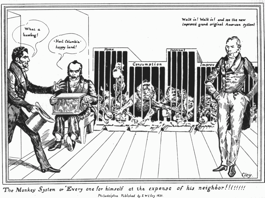
[See a larger version 1106x828 px 183KB]
A version of this cartoon also appeared in America in 1831 by E.W. Clay entitled "The Monkey System or 'Every one for himself at the expense of his neighbor'!!!!!!!!". Above the monkeys' cages is written "Home, Consumption, Internal Improvements,”and a figure states "Walk in! Walk in! and see the new improved grand original American system.” The American System as it was called was based upon high tariffs and extensive government funded infrastructure projects.


